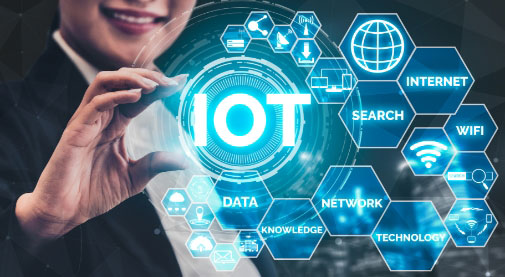When more and more companies see IoT as a helpful tool despite the hype, this will only occur in mass adoption. As technology is in its golden era, what IoT trends will influence industries around the globe. Let’s see a brief look into it.
AI- Opens IoT Potential
The use of artificial intelligence in the internet of things can be shown in the growing number of investments and buying of startups that have integrated AI and the IoT. There are several IoT merchants now that also give blended AI services, such as machine learning-based analytics.
AI combined with IoT can help businesses enhance venture management, achieve higher organizational productivity, cut down unplanned downtime, and gain insights into unique products and services.
To understand this further, let’s consider the example of industrial manufacturing. Any tool breakdown would mean unplanned downtime in this field, which could acquire huge company sacrifices. This can be bypassed with predictive maintenance, in which analytics forecast the possibility of machine breakdown to assist plan careful maintenance systems.
The IoT with AI can also improve operational productivity. It will be likely to forecast operating requirements and discover the model that should be adjusted. This is required to secure that excellent results are accomplished with replicated data crunching to see patterns hidden to the individual eye.
The blend of IoT and AI can also assist in the production of new products and services. Improvements in natural language processing (NLP), drones, and AI-controlled robots could transmute reliable monitoring and analysis.
Blockchain in IoT : What it offers?

Blockchain can maintain a record of all actions that take place between IoT machines. The IoT data, essentially supply chain data, which needs a permanent record room, can significantly serve the blockchain. The data saved in the blockchain cannot be tampered with.
Apart from this, blockchain can assist the IoT links to security. As you understand, most IoT exchanges occur between devices with limited failure. When IoT is combined with blockchain, safety can be increased, as encryption keys manage IoT data access. Moreover, copies of the report are also shared among multiple locations, which indicates no single party can control/modify the data.
Data Processing with Edge Computing
Increased adoption of IoT solutions owing to the reduction in cost needs improved data processing ability as IoT devices typically have defined data storage. Amidst edge computing, these devices will deliver the best conclusion and result in cost-efficiency when processing data. Edge computing also allows information collected by a device to be prepared right on that device without being carried to other areas.
Digital Twins
The Internet of things is held as a strategic technology to understand the full potential of digital twins’ physical products. IoT suggests perceptibility into the complete product lifecycle, reveals broader operational data for processors, and optimizes resources. A digital twin can bolster IIoT applications, and it is expected to become an essential mainstay for smart manufacturing soon.
Also, read Digital Twin Technology: An Emerging Technology.
Final Thoughts
Achievement in embracing IoT tends to be covered in expense and production performance and enriched quality, security, and protection. Fusing emerging technologies into IoT solutions can encourage those metrics and strive for profound insights online in conjunction with the smart cloud or offline with smart edge computing.
Besides those technologies, variations in hardware such as a developing collection of plug-and-play IoT devices, field-programmable gate arrays, lightning-fast processors, and video processing units can always manage operational workloads in new or modified IoT solutions.



